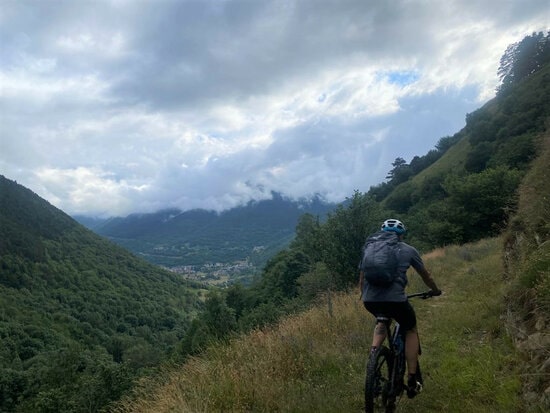A valley of breathtaking beauty where one can still hear the language of the troubadours
The Vall d’Aran, in the Pyrenees, is perhaps Catalonia’s most distinct county

Crystalline rivers flowing down a valley through colossal mountains with rocky peaks, vast meadows with cattle roaming, and centuries-old villages with stone walls and slate roofs.
If one were to pick Catalonia's most beautiful spot, the Vall d'Aran would not fall short of potential candidates.
Resting on the northern side of the Pyrenees, the Vall d'Aran is one of Catalonia's most remote regions, and perhaps its most distinct county—especially as it’s the only one to have been officially labeled a "singular territorial entity."
A four-hour drive from Barcelona, it's the furthest spot one can travel to from the city without leaving Catalonia—a valley so isolated that for centuries many visitors would only get there through France, shying away from an uncertain journey through 2,000-meter high mountains.
Unlike the rest of Catalonia, the Vall d'Aran faces the Atlantic Ocean, not the Mediterranean Sea. This means that water flows north, as is the case with the Garona (or Garonne), one of France’s largest rivers.
Due to its location, the valley's climate is also distinctly wet, contrasting with dry summers common elsewhere in Catalonia. The abundant rainfall helps sustain thriving and diverse flora and fauna, biologist and local mountain guide Sara Arjó explains.
"With the valley facing the Atlantic, rain is more frequent, especially in spring and summer, and this creates the conditions for plants that we can’t find on the other side," she told Catalan News.
The effects of the valley’s distinct location are not only felt in its meteorology, but also in its history.
Climatology is hardly the only area where the valley’s distinctness is felt. Throughout the centuries, it has also come to define its history and culture.
History and language
With the Pyrenees acting as a natural barrier between the Iberian peninsula and the rest of Europe, the Vall d’Aran has repeatedly been annexed, unconquered, and liberated by kingdoms and empires on both sides of the mountain range, be it the Aragon crown or Napoleonic troops.
A defining moment came in 1313, when King James of Aragon ratified the Querimònia, a charter of privileges. It established the Conselh Generau as the Vall d’Aran’s main administrative body—the Medieval institution from which the contemporary Aranese government borrows its name.
In the Middle Ages, when vulgar Latin was morphing into different Romance languages, the Vall d’Aran saw the emergence of Occitan, which covered the southern third of France and bits of Italy. More specifically, the dialect that reached the Vall d’Aran was known as Gascon.
Occitan provided a vehicle for the influential lyric poetry composed by troubadours, which later spread throughout Europe.
"It is the great literary phenomenon of European history," says Jusep Lois Sans, the president of the Occitan Language Academy. "And the language we speak today, known as Aranès (Aranese), is the closest you’ll get to the language of the troubadours, with fewer variations from Medieval times than Catalan, Spanish or French."
Nowadays, Aranese enjoys legal protection and is recognized as one of Catalonia’s official languages.
Students at public schools in the Vall d’Aran learn it as their first language, but its overall use has decreased over the decades, and about 20% of the valley’s 10,000 inhabitants use it as their main form of communication.
"The language is well and alive," says Sans. "But we must not forget that we’re losing speakers, and we must take further action to protect it if we don’t want to end up devoured."
Filling the Sink podcast
Press play below to listen to the latest Filling the Sink podcast episode on the Vall d'Aran valley.